
Desert Green: Joshua Tree National Park
Joshua Tree
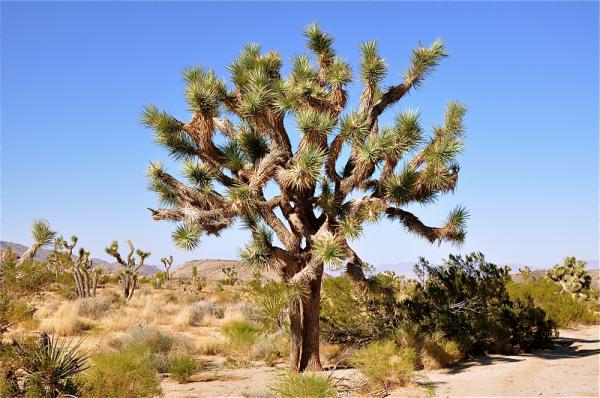
Joshua Trees (Yucca brevifolia) are the largest of the yucca plants that grow naturally in the desert areas of southwestern California, Nevada, Utah and Arizona. They prefer the dry, sandy soil of this region and are found at elevations between 2,000 and 6,000 feet (600 and 1,800 meters).
Joshua Tree
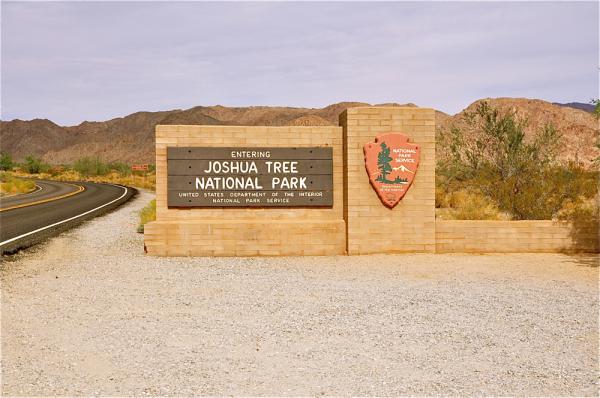
Large, natural stands of these picturesque, evergreen, spike-leafed yuccas can be found and are protected at the Joshua Tree National Park near Twentynine Palms, California. This 585,000- acre national park is a wilderness paradise for the plants and animals naturally found in the southern range of the Mojave Desert.
Joshua Tree
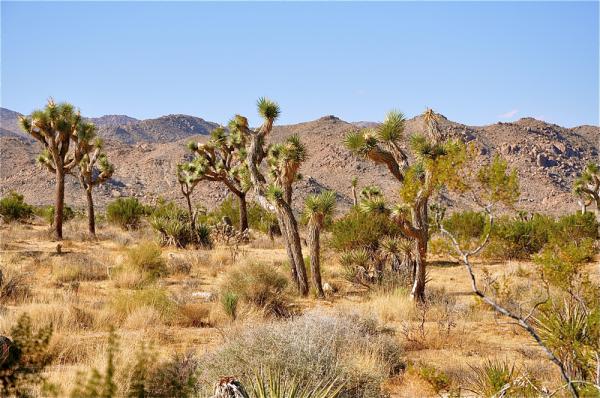
This symbol of the Mojave Desert can live to between 100 and 300 years and grows to a height of 30 feet (9 m), with a 3-foot (1-m) diameter. Long thought to be members of the agave family, the Joshua Tree and all yuccas have recently been reclassified as members of the Lily (Liliaceae) Family. Like all yucca, Joshua Trees rely on the Pronuba moth (Tegeticula yuccasella) to pollinate its creamy cluster of white flowers.
Joshua Tree
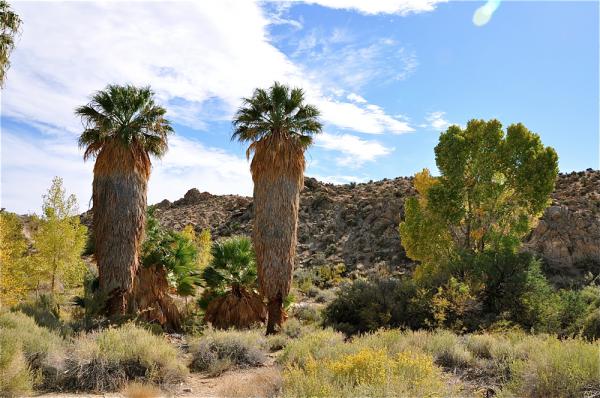
The richness and variety of life found in the Mojave Desert is highlighted throughout the wilderness landscape of the national park. Ancient fault lines allow the flowing water of underground rivers to seep to the surface creating desert oases of cottonwood and fan palm trees. Such oases also once allowed for small groups of native peoples to live in this dry, harsh environment .
Joshua Tree
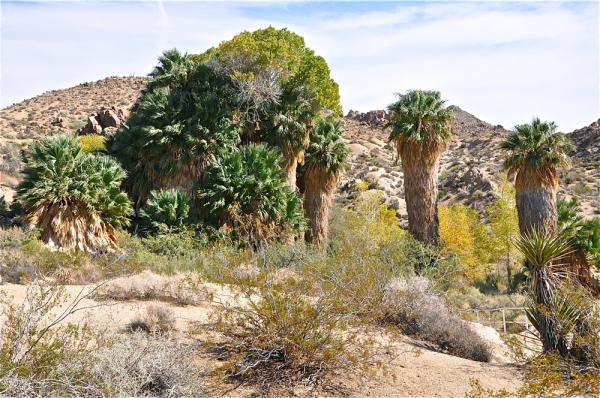
There are 158-desert fan palm oases found across North America and five happen to be located in this natural park of the Mojave Desert. The desert fan palm (Washingtonia filifera) is native to this area and can live up to 80 to 90 years. These trees, which seem so out-of-place in this desert landscape, can grow up to 75 feet (23 m) in height and weigh as much as 3 tons (nearly 3,000 kilograms). The leaves of the desert palm can reach 6 feet (2 m) in length and nearly as wide.
Joshua Tree
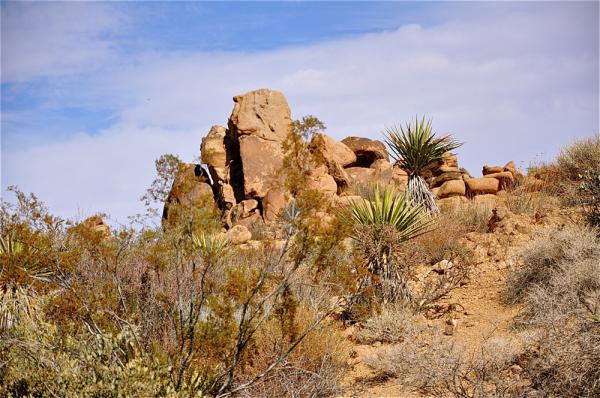
Outcroppings of interesting geological formations are found throughout this part of the Mojave Desert. The powerful movement of the Earth's crustal plates created washes, playas and alluvial fans of beauty and intricacy and has long shaped this desert land. The igneous rock intrusions are monzogranite, a type of granitic rock composed of quartz, mica and feldspar. The current desert landscape began to be formed about a million years ago and as ironic as it may seem, rushing water was the main eroding agent.
Joshua Tree
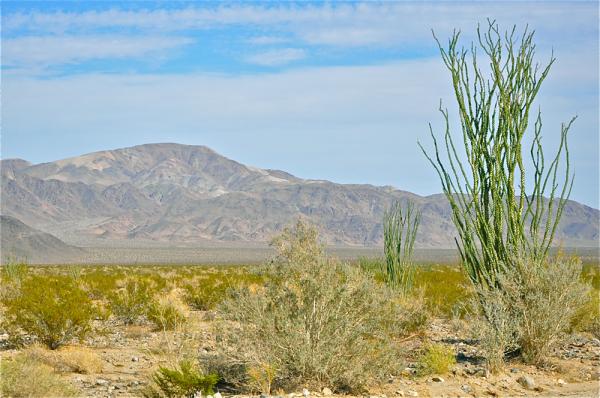
Great stands of Ocotillos (Fonquieria splendens) can also be found here in this wilderness of the southern Mojave Desert. These interesting desert dwellers are members of the Candlewood Family and at times have been called Candlewood, Simwood, Coachwhip and Vine Cactus (even though they are not a member of the cactus family).
Sign up for the Live Science daily newsletter now
Get the world’s most fascinating discoveries delivered straight to your inbox.
Joshua Tree

These multi-armed, bajada loving scrubs can grow to a height of 20 feet (6 m) and some species can have as many as 75 slender canes. During times of rain, small leaves line the canes to carry on the process of photosynthesis. During times of drought that process is completed by chlorophyll found within the structure of the canes. Rain also results in clusters of orange flowers gracing the tips of each cane. Ocotillos are related to the unique Boojum Trees of Baja California.
Joshua Tree
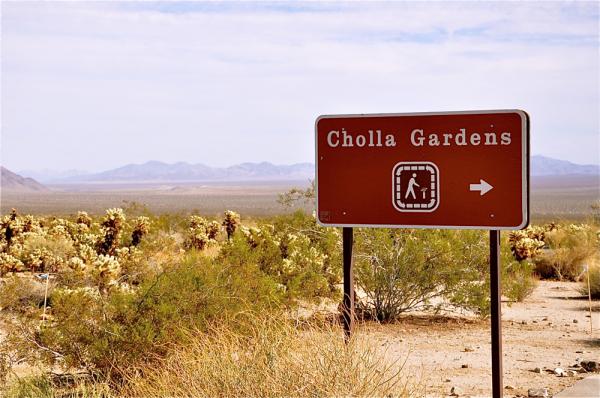
Great cholla forests are also found in this part of the Mojave Desert. These scrubby cacti represent some 20 different species in the North American deserts . All have cylindrical stems made up of segmented joints. These stems, which are really adapted branches, serve as the location for photosynthesis and water storage.
Joshua Tree
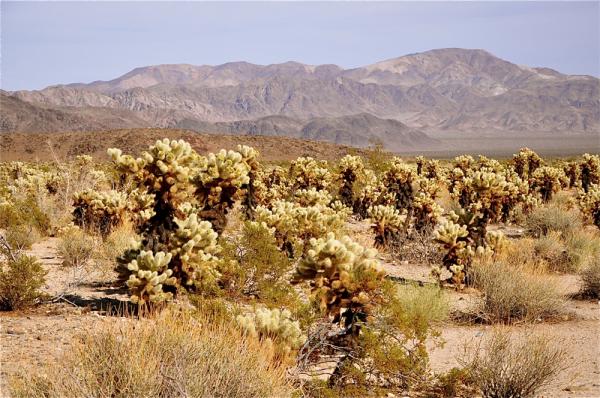
The joints of some species of cholla are easily broken off and this fact has giving rise to the untruthful legend that the joints actually "jump" and attach themselves to any animal or human passing by. Legends aside, the spines of the cholla, which are actually modified leaves, are painful when they attach themselves to an unaware visitor walking though a cholla forest.
Joshua Tree
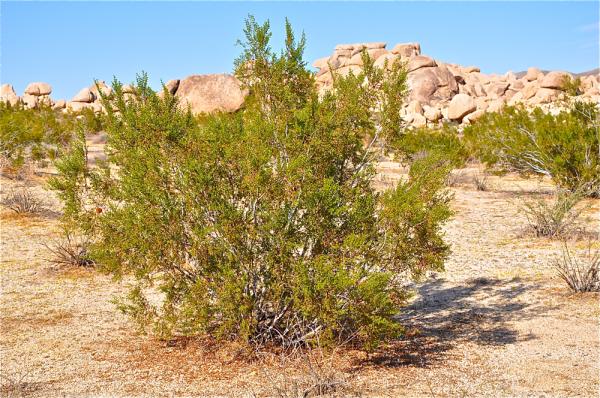
Creosote bush (Larrea divaricata) is a common plant of this area. It's roots have the unusual ability to release a poison into the ground which prevent other desert scrubs from growing nearby, thus assuring that all precious rainfall is absorbed by the first creosote bush that begins to grow in that spot. This predatory characteristic resulted in the creosote bush being given the Spanish nickname "el gobernador ," the governor!










